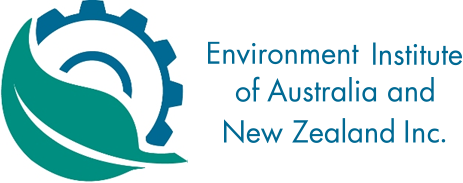-
Member Login
- Home
- About
- Institute Groups
- Membership
- Events
- News & Publications
- Institute Programs
- Resources
- Jobs Board
- Contact Us
- Site Info
Celebrating 20 years of the Journal
Adapted from editorial by R.W. (Bill) Carter and Helen Ross
To celebrate the 20th anniversary of the Australasian Journal of Environmental Management, the EIANZ journal, the editors Helen Ross and Bill Carter have compiled a special issue which will be released in July or August, on the exact anniversary. The special issue includes an editorial summarising the journal‘s achievements as a now-internationally
recognised journal; a historical account of developing environmental management as a profession in Australia and New Zealand, by the past presidents, past editor and a colleague; two commissioned review articles and an analysis of the papers published in the journal over the 20 years and how these reflect the changes in the field of environmental management. The first review article considers environmental management progress in Australia and New Zealand in the areas of climate change, biodiversity, freshwater and marine management, and how Indigenous and business perspectives have been influential in these areas. The second reviews the innovative community based natural resource management arrangements in both countries. Both should provide useful explanations of policy in Australia and New
Zealand, and their histories.
The following excerpt from the editorial demonstrates the standing the journal has achieved in its 20 years under the care of Eric Anderson, Helen Ross, Bill Carter and the journal Board. As the peer-reviewed journal of EIANZ, the publication has sought to provide robust scientific evidence and strong policy analysis articles on issues relevant to EIANZ members and to serve as a platform for publication of scholarly articles to guide policy and practice. AJEM has earned the distinction of recognition among world journals. For example, in 2013, the Thomsen Reuters (ISI Web of Knowledge, 2012) Impact Factor for the AJEM is 0.6, up from its first measure in 2011 of 0.45. The impact factor, the key measure of a journal‘s influence, is calculated as the average annual (or five-year) number of citations per
paper published over the previous two year period. Based on the Scopus (Elsevier 2012) data base for articles published in the AJEM since 2007, SCImago (2007) ranked the AJEM in 2012:
- 33rd of 101 journals categorised as Environmental Science – Geography, Planning and Development, and 2nd of 7 for the category for Australian produced journals,
- 125th of 491 journals categorised as Social Sciences – Management, Monitoring, Policy and Law, and 2nd of 5 for the category for Australian produced journals,
- 6th of 19 Australian based journals in the overall Environmental Science category
- 5th of 51 Australian based journals in the overall Social Sciences
- category.
From 2007 to 2012, 155 authors published in the AJEM. Of these, 29 (19%) published more than one article, and 10 (6%) more than two. Australians dominate authorship, with New Zealanders significantly under represented (Elsevier 2012).
Most read and cited articles Full article downloads from the AJEM page on the Taylor & Francis Online website have doubled from 6083 in 2012 to 12,737 in 2013. While Australasia dominates the regional location of those who have downloaded articles, there is also an international readership. As Co-editors, we are pleased to see that the top two most read or downloaded articles, since 2007, are editorials. These editorials provide commentary on natural disaster community resilience, and stewardship.
One feature of AJEM is cited editorials which guide the reader as to the content of the journal and set this content in the context of current themes and issues. The editorials are in fact amongst the most read or downloaded articles. The top ten most read or downloaded articles since 2007 are:
- Ross & Carter 2011, Natural disasters and community resilience (851 views)
- Carter & Ross 2012, Are we ready to embrace stewardship (746 views)
- Robins & Kanowski 2011, Crying for our Country: eight ways in which ‘Caring for our Country’ has undermined Australia's regional model for natural resource management (680 views)
- Bennett 2011, Estimating the value of Australian environmental assets (627 views)
- Gilbertson, M, Hurlimann, A & Dolnicar, S. 2011, Does water context influence behaviour and attitudes to water conservation? (601 views)
- Phelan 2011, Managing climate risk: extreme weather events and the future of insurance in a climate-changed world (483 views)
- Ross, H, Grant, C, Robinson, CJ, Izurieta, A, Smyth D. & Rist P. 2009, Co-management and Indigenous protected areas in Australia: achievements and ways forward (455 views)
- Cotton & Trück, Interaction between Australian carbon prices and energy prices (434 views)
- Wheeler & Crisp 2011, Going organic in viticulture: a case-study comparison in Clare Valley, South Australia (423 views)
- Roiko, A, Mangoyana, RB, McFallan, S, Carter, RW, Oliver J & Smith, TF 2012, Socio-economic trends and climate change adaptation: the case of South East Queensland, (403 views).
Those who have cited AJEM articles come from a diversity of countries, although Australia and New Zealand predominate (Figure 3). Citation of AJEM articles by authors from other countries (e.g., USA) is noteworthy because they are not major contributors to the AJEM and articles are Australasia biased. That these overseas authors, publishing in journals other than AJEM, choose to cite from the AJEM suggests that the journal is having an international impact, which is likely to grow with the reputation of the journal. The reputation of the AJEM depends on the quality of articles published. High standards are necessary, and acceptance is competitive especially given fixed page budgets. Our current rejection rate is 53 percent.
We acknowledge and value the rights and interests of Indigenous Peoples in the protection and management of environmental values through their involvement in decisions and processes, and the application of traditional Indigenous knowledge.

